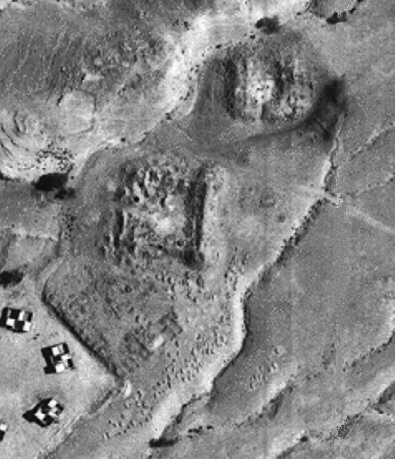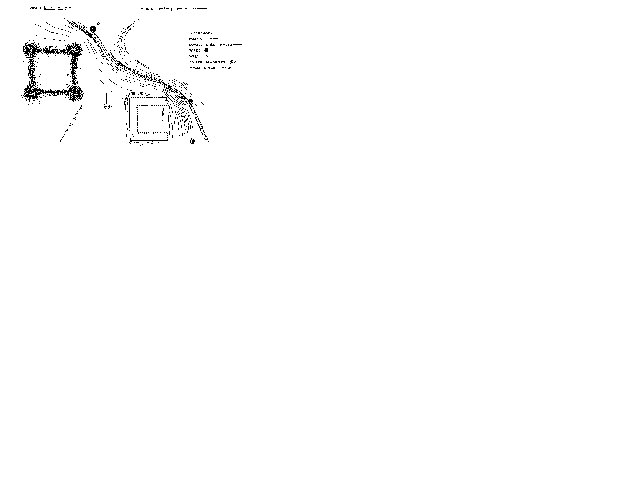

Dr. Andrew M. Smith II, Director

Located near Wadi Namala, a principal route into Petra, Bir Madhkur is a major defensive structure situated in the foothills of esh-Shera, Jordan. Fritz Frank and Nelson Glueck both visited the site and noticed evidence of extensive agricultural activity in the immediate vicinity of Bir Madhkur (Glueck 1935; Frank 1934). Glueck also collected several coins from the area including one of Constantine (A.D. 306-337) and another of Constantius II (A.D. 337-361). As Director of the American Center of Oriental Research, David McCreery later visited Bir Madhkur collecting predominately Nabataean and Late Roman pottery. He was followed by King et al., whose pottery collected ranges in date from the Nabataean to Byzantine periods. This concurs with our own investigations at the site (McCreery, n.d.; King et al. 1987; Smith and Niemi 1994; Smith et al. 1997; Smith 1998; Perry and Smith 1999; Niemi and Smith 1999; Smith 2005).
Commanding the site of Bir Madhkur is a small castellum, measuring just over 30 m square, which is a quadriburgium with four corner towers. The castellum here is in an exceedingly ruinous state with much of the northern wall destroyed by local bulldozing and robbing. The walls, two-courses wide, were constructed of worked limestone blocks. Compartments or rooms abut the interior of the curtain wall and surround an open courtyard. The location of the gateway into the fort could not be determined during the time of our visit but probably existed along the damaged northern wall. A large cemetery is located to the northeast.
Another structure, measuring ca. 30 x 25 m., is situated on the bank of a dry wadi ca.
34 m southeast of the fort. According to Glueck, this second structure may be a birkeh,
and the large mound of ash just beyond  the south wall of the structure may be
evidence for local pottery production. There are reasons, however, to doubt these
interpretations. Although the ruined condition of this structure does not allow for a
clear identification of its nature, there is unmistakable evidence of partitioning along
the south wall. Distinct wall alignments and linear mounds along the interior face of the
south wall can be seen, suggesting that these rooms measured at least 5 x 5 m. Also of
interest is a robber pit that had been excavated recently along the outer face of the east
wall. This exposed a large quantity of pottery sherds as well as evidence that the
exterior face of the wall had been plastered. Moreover, although the ash mound to the
south contains a considerable amount of pottery sherds, not one kiln waster was found, and
among the ceramic artifacts present there are a large number of fragmented pipes, tiles,
and glass. With this new evidence, it is doubtful that this structure can be identified as
a birkeh. Rather and more importantly, it may be a large bath complex.
the south wall of the structure may be
evidence for local pottery production. There are reasons, however, to doubt these
interpretations. Although the ruined condition of this structure does not allow for a
clear identification of its nature, there is unmistakable evidence of partitioning along
the south wall. Distinct wall alignments and linear mounds along the interior face of the
south wall can be seen, suggesting that these rooms measured at least 5 x 5 m. Also of
interest is a robber pit that had been excavated recently along the outer face of the east
wall. This exposed a large quantity of pottery sherds as well as evidence that the
exterior face of the wall had been plastered. Moreover, although the ash mound to the
south contains a considerable amount of pottery sherds, not one kiln waster was found, and
among the ceramic artifacts present there are a large number of fragmented pipes, tiles,
and glass. With this new evidence, it is doubtful that this structure can be identified as
a birkeh. Rather and more importantly, it may be a large bath complex. 
West and southwest of the castellum, Frank observed remnants of a complex of domestic houses. In an area of ca. 25 m square, numerous intersecting wall alignments and mounds indicate that this is a large complex of abutting structures. The exact nature and purpose of these constructions remain to be determined. Another smaller structure is situated ca. 18 m just south of the castellum. It measures ca. 18 x 10 m with roughly cut stone walls measuring ca. 0.80 m thick. The entrance into this structure is along the west wall, and there is evidence of at least six internal rooms.
Albrecht Alt was the first scholar to attempt an identification of Bir Madhkur, suggesting that it might be the site of ancient Moa (Alt 1935: 7, 24, 26, 31, 47). Other scholars, however, proposed to identify Bir Madhkur with Calamona of the Notitia, the base of a Cohors prima equitata (Not. Dign. [Or.] 34.43; Avi-Yonah 1976: 45; Rothenberg 1971: 217) Alt identifies Calamona with Ellebana of the Beersheva Edict, but does not attempt to identify or locate the settlement (Alt 1935: 26). The ancient identity of Bir Madhkur, despite previous attempts to assign an ancient place-name to the settlement, remains uncertain.
As a component of the Wadi Araba Archaeological Research Project (WAARP), the Bir Madhkur Project, directed by Dr. Andrew M. Smith II, seeks to examine the economic, social, and cultural history of the ancient site of Bir Madhkur, located on the eastern fringe of Wadi Araba southwest of Petra. The research design consists of three main components: 1) continuation of a regional archaeological, environmental, and ethnographic survey of the environs of Bir Madhkur (the Central Wadi Araba Archaeological Survey), 2) excavation of the ancient settlement to learn more of its history and role in the regional economy, society, and culture of southern Jordan and Israel, 3) analysis of artifacts and other evidence of the material culture relevant to the regional economy, society, and culture. This research is expected to reveal potential new evidence regarding the history and organization of the regional economy, its political and military significance in a frontier zone, and the social and cultural identity and lifestyle of those who occupied the site.
copyright ©1996 Wadi Araba Archaeological Research Project
Most recent update: 7/10/07
For more information contact amsii@hotmail.com